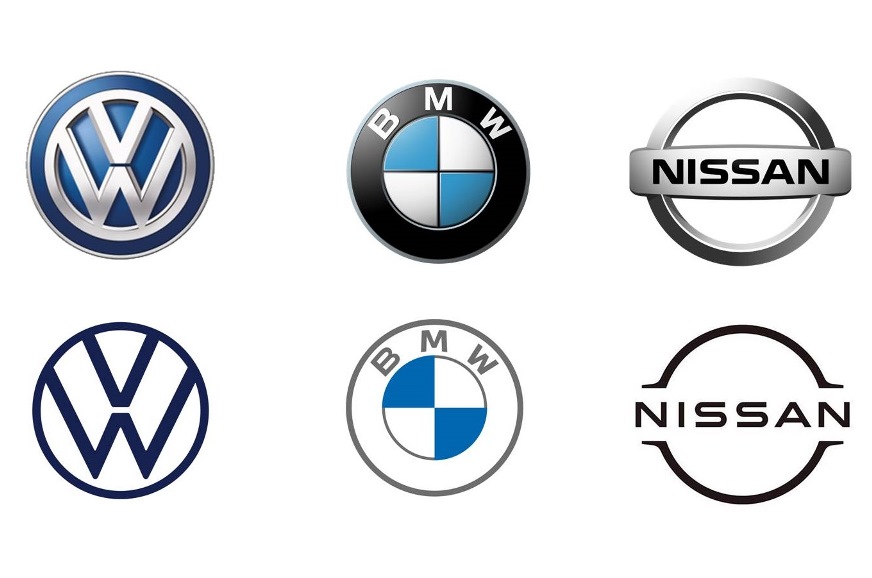Blog: Why is logo design going flat?

Minimalism is very much the rage these days, and I personally love it, but the recent spate of new automotive logos has got me wondering, does minimalism work on company logos or have they so far been badly executed, or perhaps I’m missing something entirely.
Volkswagen, BMW, and now Nissan too, have all taken the wraps off new, updated logos; and there is a clear common theme across them all – a reduction in the number of elements, and a loss of the 3D effect, with a switch to flat or 2D artwork. Take the Volkswagen logo, gone is the 3D rendering, and the outer circle that housed the VW roundel is no more. The BMW badge is now 2D too and has lost the black circle. With absolutely nothing in its place, it’s now transparent. As for Nissan, the Japanese firm has also taken the iron to its logo, and at the same time also gotten rid of the rectangle that housed the Nissan lettering. In its place? Nothing. It too is now transparent.
Now before I sound summarily dismissive of this, let me say that I do acknowledge the fact that there is a lot of thought, and science too, behind logo design; but as with everything else, sometimes it just gets too deep and too complicated for its own good. Reading the accompanying press releases, you can see a lot written about the thought and execution, but it’s heavy on big fancy words and all very abstract.
BMW and VW point to certain underlying communication they say their new logos have. BMW says the logo’s transparency is ‘an invitation’ for customers to join the BMW world, while VW says its new ‘clearer’ logo represents the new Volkswagen motto of ‘no filter’. Sure, in a way, I can see it, but it’s quite abstract.
Also, both German brands say their new logos are easier to use across all mediums and cite, in particular, the digital world. And I do agree here, simpler logos with fewer elements render far better than the more complex ones; especially on small screens which, today and in the future, include smartwatches too.
With an eye on simplicity, the brands have also both cited a paring-down and reduction-of-elements approach to designing their new logos. However, while trying to walk the line of minimalism, I think the new designs have strayed over a little into oblivion. They are too easily missed. Just head over to the Volkswagen website to see what I mean.
Moreover, what goes missing is the excitement factor. I remember as a kid I would cut out pictures of cars and even logos from the few newspapers and magazine that I could get my hands on; this was in the early 80’s, when we didn’t have the internet or such a wide access to content like today. A black-and-white picture was a neat bit of memorabilia, a coloured one was a bonus, and getting something like a pencil, a cap or a keychain with a car company’s logo on it? Man, that was like finding the Holy Grail!
Logos are meant to do exactly this. Out on their own, minus the product, logos create excitement and help build a brand; they are what people collect and want adorned on their caps, t-shirts, pencils, and what not. These new logos, I’m not sure they stir that same kind of emotion. They are too simple and, more damagingly so, too easily visually lost. But hey, I may be wrong, or quite simply the wrong age group. Maybe these designs do appeal to the younger millennials. Time will tell, for sure. Until then, though, do let me know what you think? I’d love to hear your thoughts on these new designs.

logo design company
ReplyDeletelogo design companies
affordable logo design